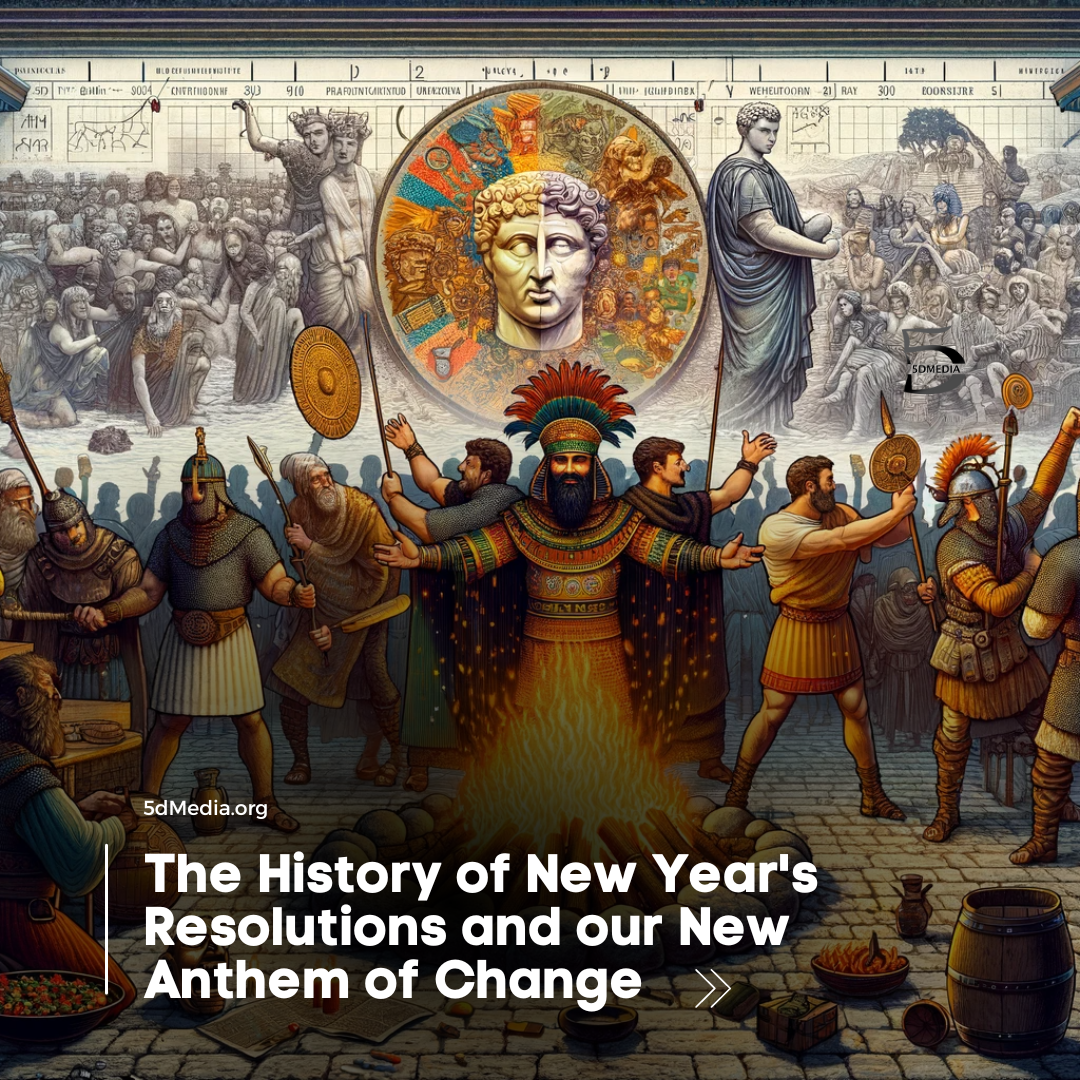As the clock strikes midnight on December 31st, millions around the world commit to New Year’s resolutions. These promises for self-improvement or change have a rich history, dating back thousands of years. In today’s world, where change is constant, the song “A Brand New Chapter” resonates deeply with the spirit of New Year’s resolutions.
The Origins of New Year’s Resolutions
The tradition of New Year’s resolutions began over 4,000 years ago in ancient Babylon. Babylonians made promises to their gods at the start of each year, vowing to return borrowed objects and pay their debts. The Romans continued this tradition in honor of Janus, the two-faced god who symbolically looked back into the previous year and ahead into the future.
In medieval times, the Knights took the “Peacock Vow” at the end of the Christmas season each year to re-affirm their commitment to chivalry. The concept of reflecting on the past and looking forward to the future at the beginning of a new year has been a persistent theme throughout history.
Evolution Through the Ages
During the Renaissance, the practice of making resolutions took a more personal turn, with individuals making commitments to self-improvement. This was a shift from the earlier traditions of making promises to others or to deities. The 18th century saw the rise of religious resolutions, particularly among the Puritans in America, who emphasized the importance of reflecting on one’s sins and seeking improvement.
In modern times, New Year’s resolutions have become largely secular, focusing on self-improvement in areas such as health, finances, and personal skills. This shift reflects broader cultural changes towards individualism and self-directed improvement.
Psychology Behind Resolutions
The tradition of making New Year’s resolutions is rooted in the human desire for self-improvement and the belief in a fresh start. Common resolutions include losing weight, exercising more, quitting smoking, and saving money. These goals reflect widespread desires for better health, financial stability, and personal growth.
Success and Failure Rates
Despite the popularity of New Year’s resolutions, studies show that a significant percentage of them fail. According to a study by the University of Scranton, only 8% of people achieve their New Year’s goals. This high failure rate can be attributed to unrealistic goal setting, lack of accountability, and waning motivation over time.
Cultural Variations
New Year’s resolutions are not just a Western tradition. Cultures around the world have their own versions of resolutions, often tied to their specific New Year celebrations. For example, in Spain, eating twelve grapes at midnight symbolizes twelve lucky months ahead. In Japan, the New Year is a time for organizing and cleaning, reflecting the desire for a fresh, orderly start.
Impact of Media and Popular Culture
Media and popular culture play a significant role in shaping and reflecting the tradition of New Year’s resolutions. Songs like “A Brand New Chapter” by 5dmedia capture the essence of this tradition, encouraging listeners to embrace change and new beginnings.
“A Brand New Chapter” by 5deMdia
“A Brand New Chapter” is more than just a song; it’s an anthem for those looking to start anew. With its uplifting melody and inspiring lyrics, it perfectly encapsulates the spirit of New Year’s resolutions. The song encourages listeners to let go of the past and embrace the future with hope and determination.
The tradition of making New Year’s resolutions continues to be a powerful symbol of hope and renewal. As we listen to “A Brand New Chapter” by 5dmedia, let us be inspired to make our own resolutions and strive for a better, brighter future.


